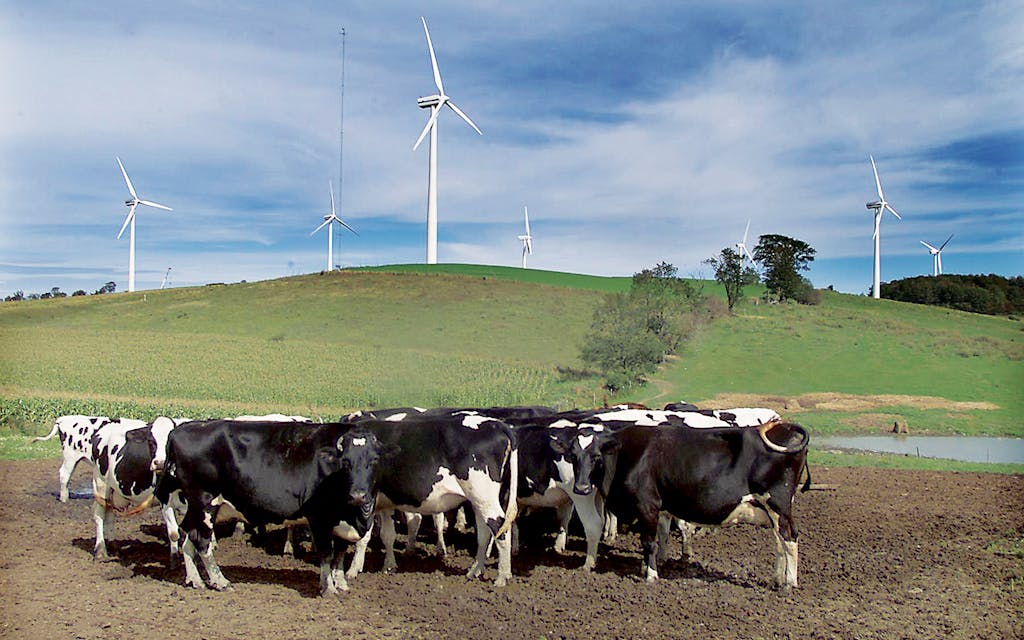Lynda Clemmons fondly remembers her second job out of college. Nine months into an unfulfilling stint at a Houston investment bank, the Southern Methodist University alum stopped by a Saturday job fair hosted by a natural gas and power trading firm. She got an offer that Monday, and the position was better than she thought possible for a recent graduate who’d spent her collegiate days studying French and reading Chaucer.
The work was rewarding, even inspiring. Her team played an instrumental role in developing a financial market that helped slash air pollution in the United States, dramatically reducing the threat from acid rain. When the company cooked up a way for seasonal businesses to insure themselves against unexpected swings in the weather, Clemmons was put in charge of implementing the idea. Today, that creation—known as the weather derivative—is a crucial tool in a world rocked by climate change, with about $10 billion worth of derivative contracts traded annually by companies ranging from ski resorts to commercial real estate firms. “I loved my job,” she told me recently. “Enron was challenging and fascinating and, for a young person just out of school, all-encompassing.”
That is not, of course, how most Texans remember Houston-based Enron. Launched in 1985, the company was bankrupt by 2001. CEO Jeffrey Skilling and other senior executives were imprisoned for conspiracy and fraud related to deceptive practices that grossly overstated the firm’s profits. You could fill a shelf with books written about its crooked accounting, the hubris of its management, the greed and venality of its traders.
Twenty years later, however, Clemmons isn’t alone in waxing nostalgic about Enron. Interviews with nearly a dozen former employees paint a similarly rosy picture. Working there was “an amazing experience,” one said. “An awesome place to be a young person,” said another. Still, their memories contain contradictions. Enron was an invigorating, dynamic workplace (managed by unapologetic criminals). The company fearlessly pioneered several new markets and industries (while looting others).
No doubt Enron’s misdeeds were super-villainously bad. It was the company’s traders, you may recall, who shut down California power plants to spike electricity prices, contributing to widespread outages—and were caught on tape laughing about it. When journalists and whistleblowers toppled the castle of deception, countless Texans saw their retirement savings wrecked in the process. It’s a testament to the gravity of Enron’s crimes that, in a nation where many corporate wrong-doers, if they are punished at all, are slapped with fines, chief financial officer Andy Fastow and Skilling received prison sentences of six and fourteen years, respectively. (These days, Fastow lectures audiences about corporate ethics; Skilling has reportedly started an energy tech company.)
Enron imploded with such cosmic intensity that its legacy became irredeemably dark. Yet Enron-born technologies and markets remain intrinsic parts of the energy, finance, and tech industries. A diaspora of its alumni have gone on to build innovative, successful companies in renewable energy, finance, even sporting goods. Enron also invested in developing technologies that, while they didn’t pay off at the time, demonstrated that the company possessed an insightful vision of the future.
Perhaps now that much of the hurt and humiliation and anger have receded, and the incarcerated executives have served their time, we should grant credit where it’s deserved. Dare we suggest that it might be time to praise Enron, or at least give the company something it never gave itself: a fair accounting?
In July 2000, Enron employees arriving for work at its downtown Houston skyscraper encountered a red carpet, figures from Star Wars, and movies playing on screens all around. The celebration marked the launch of Enron’s video-on-demand service, part of a new twenty-year deal with Dallas-based Blockbuster.
That’s right: before Netflix, HBO Max, Hulu, or Amazon Prime Video, Enron built the nation’s first streaming service. The handful of cable companies then experimenting with video on demand didn’t offer much more than souped-up pay-per-view, in which videos repeated nonstop, starting over at prescheduled times. Enron’s service, which charged $4.99 a movie, was next-level: consumers could click on a video and watch within sixty seconds. They could even pause, fast-forward, and rewind—all at “VHS quality or better,” an Enron press release boasted. The service was among the first to operate over a fiber-optic network, involving elements of what became known as cloud computing—seven years before Netflix began streaming movies. “The technology was amazing,” recalled Rondo Fehlberg, then executive vice president of a broadband provider near Salt Lake City, one of four pilot markets.
The service died before Enron did, when the deal with Blockbuster ended acrimoniously in March 2001. Enron blamed Blockbuster for failing to license enough good movies from the studios. (One week, the most watched show on Enron’s system was a collection of Popeye cartoons from the forties.) And access to the necessary broadband internet connections was far more limited then; at its peak, the company never had more than seven hundred customers. Of course, Enron being Enron, it claimed it made $53 million from the service in the final months of 2000 alone.
Its forward-thinking culture influenced other industries in more lasting ways, particularly in the energy sector. EOG Resources, a pioneer of oil fracking, emerged from Enron (EOG once stood for “Enron Oil & Gas”). Enron also helped propel wind energy into the Texas mainstream. In 1998 Claire Broido Johnson, then a 26-year-old Enron associate, was looking for the most profitable location for a wind farm. She wove together weather and pricing data in ways few had before and settled on a location between Abilene and Sweetwater, in West Texas. She showed the idea to her boss, who showed it to his boss. “They said, ‘Makes sense. How much money do you need?’ ” Broido Johnson recalled. “I said, ‘About $135 million.’ ” To her surprise, they green-lit what became Trent Mesa, the fourth-largest wind farm in the country when it was dedicated in November 2001 (T minus two weeks to Enron’s bankruptcy).

The ambitious farm was the culmination of years’ worth of Enron’s concerted investment in wind energy. In 1997 the company had purchased two struggling wind turbine manufacturers, then it went to work creating a business for them. Ken Lay, the founder and longtime chairman of Enron, wrote letters to then-governor George W. Bush extolling the “great wind potential” of Texas. Bush listened and signed legislation requiring utilities to tap renewable sources of energy as well as fossil fuels. Enron contributed not just capital but also its imprimatur—if a massive corporation such as Enron was bullish on wind, then it wasn’t just for the Birkenstock crowd. “We believe that renewable energy resources will be capturing a larger and larger share of the power market within the next twenty to twenty-five years,” Robert Kelly, Enron’s chief strategy officer, said in 1997. Since then, Texas has multiplied its wind production many times over; some 20 percent of the state’s energy is provided by wind, compared with less than 0.03 percent in 1997.
For years after its demise, Enron’s famous slanted E logo remained painted on the sides of the turbines at Trent Mesa, a reminder of the company’s role in jump-starting the industry. Today Texas generates more megawatts from wind than the states in second, third, and fourth places (Iowa, Oklahoma, and Kansas) combined.
Enron wasn’t simply shrewd about identifying new markets; it was a sharp-eyed talent spotter too. Not content to let investment banks and consulting firms cherry-pick the best minds from top universities, Enron recruited aggressively, wooing elite grads to Houston instead of New York City and Silicon Valley by paying them handsomely. The upshot: when Enron went belly-up, it cut loose many smart, ambitious workers looking to start new businesses and clamber up corporate ladders—right here in Texas.
Enron alumni include Steven Kean, CEO of pipeline giant Kinder Morgan; Jessica Uhl, CFO of Shell; Renée Galá, CFO of Jazz Pharmaceuticals; Rodney Faldyn, former CEO of Academy Sports and Outdoors; and John Arnold, an Enron trading whiz kid who ran his own hedge fund before starting, with his wife, Laura, an influential foundation committed to health-care and criminal-justice reform.
“I came here for Enron, thinking it was going to be, like, two years,” said Nisha Desai, who joined the company out of Harvard Business School, “and then we’ll get transferred to London or Singapore.” She ended up staying in Houston, recently founding Ennuity Holdings, which allows individuals to invest in large renewable energy projects.
Broido Johnson left Enron in 2000 and cofounded SunEdison. Her first deal there involved slapping solar panels onto the roof of a Whole Foods Market in New Jersey. The upscale Austin-based grocery chain signed a long-term deal to purchase the electricity generated atop the store. Broido Johnson parted ways with SunEdison in 2008, but today the type of energy deal she pioneered is commonplace. More than seventy Whole Foods locations sport solar panels on their roofs. Target and Walmart each count more than 350 stores in the U.S. with on-site solar generation.
Dung Tran, who joined Enron straight out of Rice University, founded Houston electricity retailer Varsity Energy in 2019. He also manages a private Facebook group where Enron alumni post pictures of chance encounters with former coworkers, discuss the latest energy industry news, and gossip. They remember a place that empowered employees to be creative.
Tran said Enron’s recruiting philosophy was simple. “If you hire the best people . . . and you give them a bunch of money—like, you give them a blank check to go open up a business or market—they’re going to do well,” he said. Of course, he acknowledged, “that wasn’t always the case.”

This fall, a new crop of students started accounting classes at Texas A&M University’s Mays Business School, where Michael Shaub works as a professor. He marvels to think that many of them were born around the time of Enron’s bankruptcy. “Generally, they just know it was a fraud, but they don’t know much about the story unless their parents or parents’ friends were involved,” he said. “They have no idea about the complexity of the company.”
Shaub discusses Enron in class to demonstrate that innovation is both a creative and destructive force. “Innovation implies no limits,” he said. “When you start putting limits on innovators, they become unhappy and push back.” He teaches his students—aspiring auditors and accountants—what he calls “professional skepticism” and to be wary of novel number-crunching methods.
The same culture that empowers twentysomethings to imagine new markets can also be fertile ground for criminal acts. “The only way to prevent fraud in these situations is to have some limits,” Shaub said. “You need someone to restrain this behavior.” If there’s a lasting moral to the Enron story, it’s that the smartest guys in the room need to have their ambitions not only encouraged but also carefully policed to remain within the bounds of legality.
The progeny of former Enron employees show up in Shaub’s class more often than you might think. That probably shouldn’t be surprising, considering that the company employed some 21,000 at its peak. Enron is in Texas’s bloodstream. And that’s not an entirely bad thing.
This article originally appeared in the December 2021 issue of Texas Monthly. Subscribe today.









